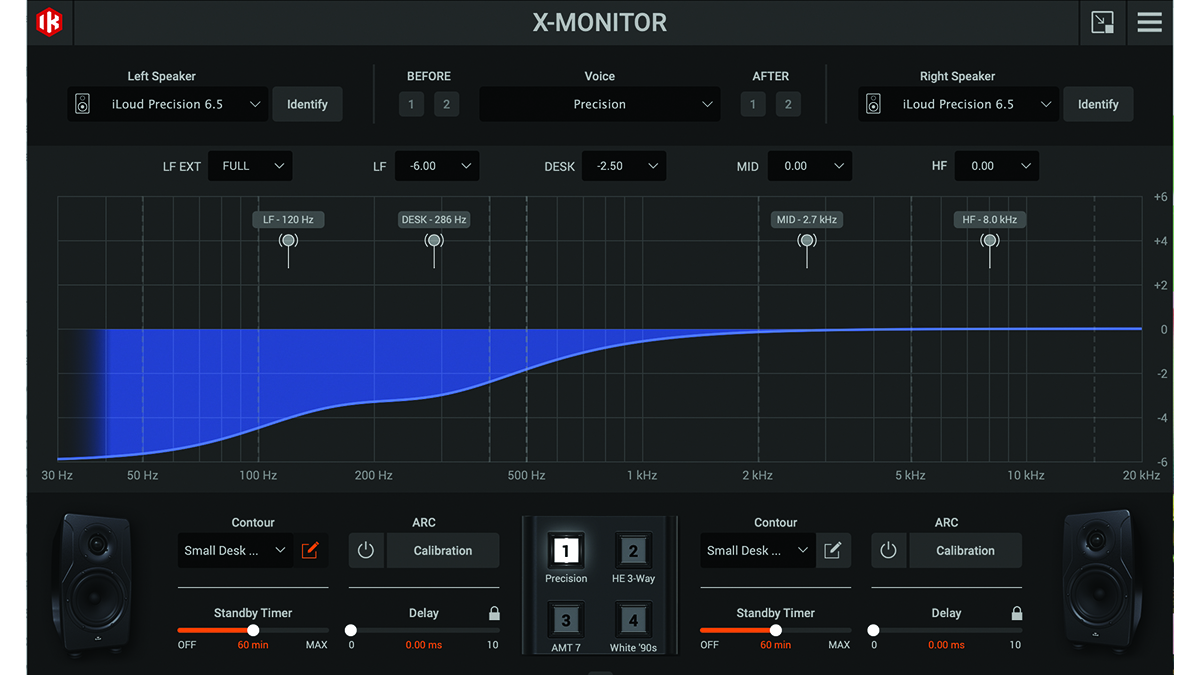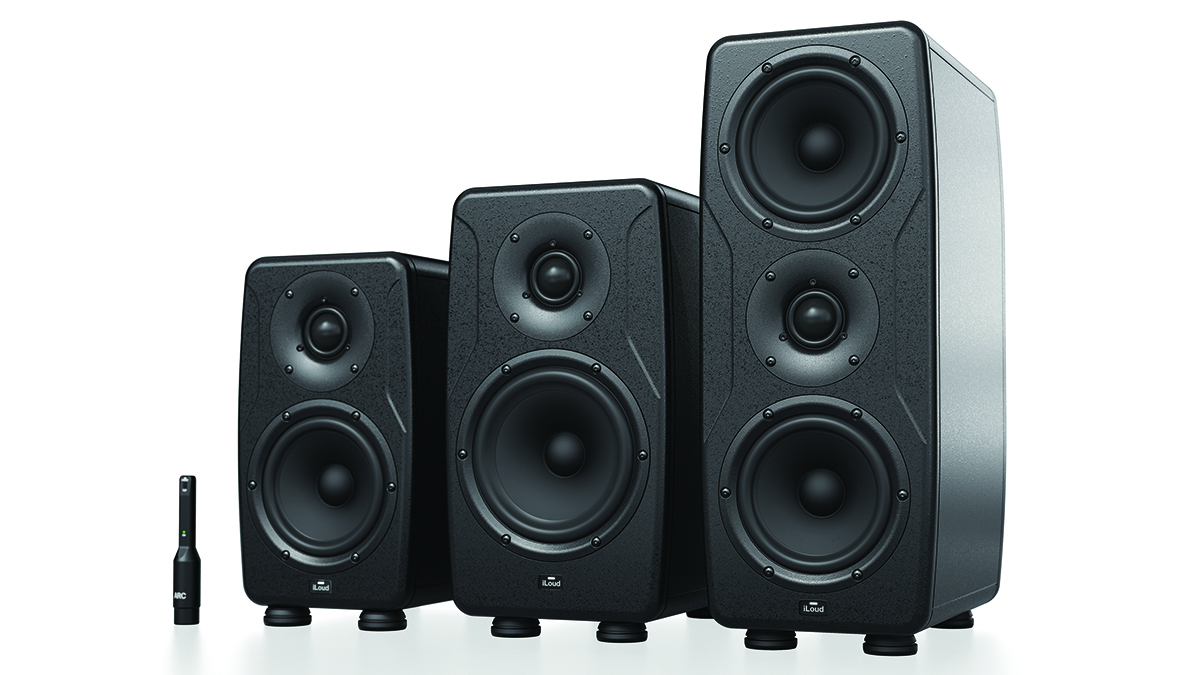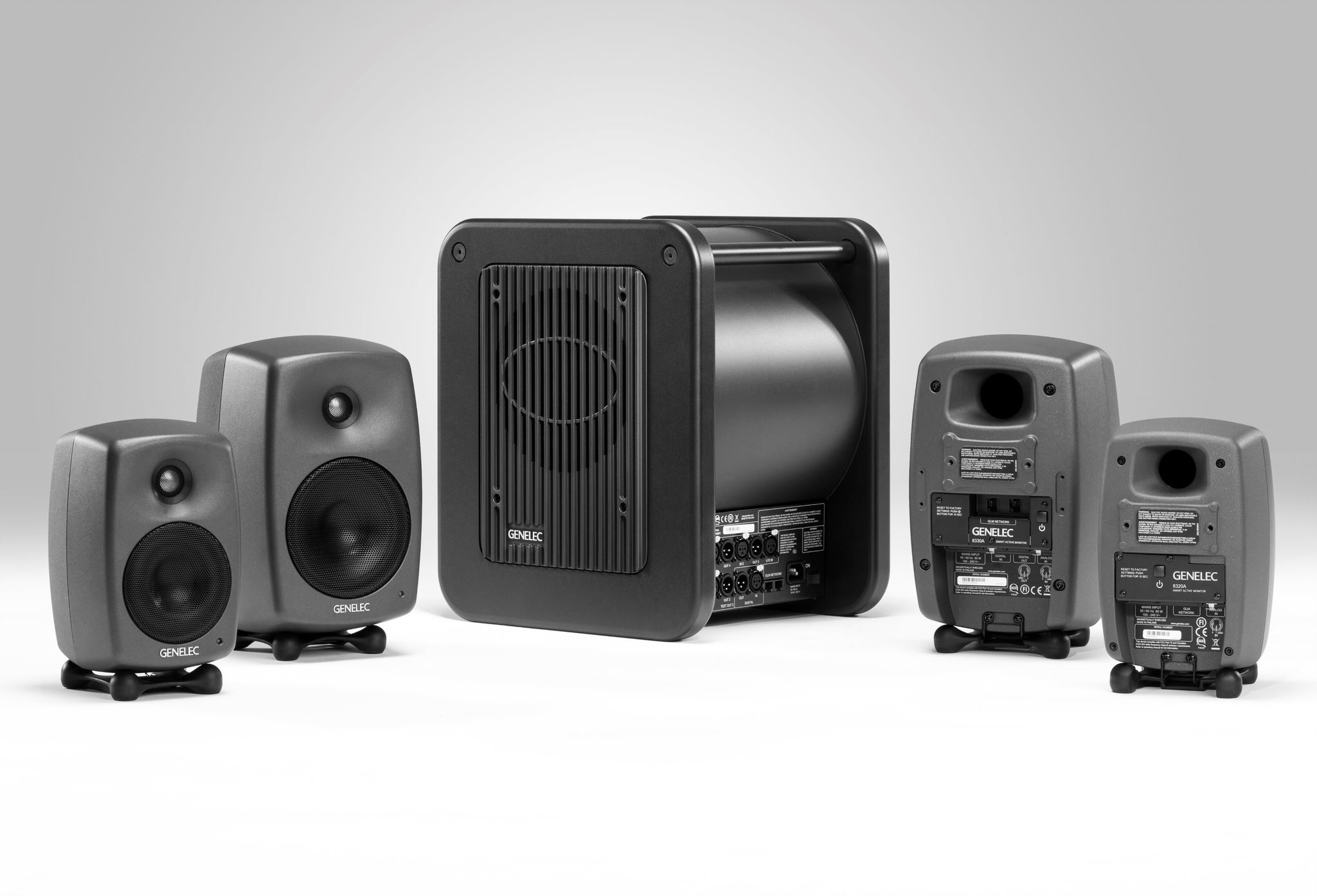MusicRadar Verdict
As expensive as these might seem, the Precision 6s offer the sound and features of speakers costing a lot more.
Pros
- +
Excellent sound to start with but even better when ARC is employed.
- +
A decent price considering what you get.
- +
ARC system is very easy to employ.
- +
Lovely controlled sound.
Cons
- -
Cheaper ways to upgrade your sound.
- -
No XLR cable for the mic.
MusicRadar's got your back
IK Multimedia iLoud Precision 6: What is it?
IK Multimedia has certainly made its mark in the world of computer music making, with great software, interfaces, and hard and soft instruments. The company has even done great speakers, with its iLoud MTM and Micro monitors delivering much more clout than their size and price suggest.
But this small size sums up IK’s ambitions thus far. Everything has been aimed at the consumer end of the market, albeit often with professional specifications. Not so these latest speakers. The new iLoud Precision range is aimed at project/pro musicians with great specs and a price to match.
Your studio monitors – while not as exciting as your plugin synths, keyboards and even the computer you use – are the most important item in your production armoury. Being able to hear mistakes in your mixing – which good monitors will reveal – means you can sort them out.
These iLoud Precision 6s, the middle monitors in the new Precision range, promise to help you do this in two ways. First, they have a great set of specs. They span a wide frequency range (37Hz – 30kHz) with very little variation in colour across it (a +/- 1 dB accuracy) which means that the response is flat. ‘Flat’ means ‘good’ as if it was enhanced, say, in the bass region, you’d pull back on the bass when mixing resulting in a bass-lite mix. IK’s specs are so good in this regard that it says they match speakers costing three to four times as much.
Secondly, these speakers take into account the room they sit in. Unless your room is acoustically treated to a high spec, it will impact on your speakers, changing that frequency response. These speakers employ the ARC System of calibration via a piece of software called X-Monitor to auto-adjust to your room. Connect the included MEMS measurement mic, and after a series of sonic tests, the Precisions tune themselves to deliver a flatter response – see below for more detail.
Basically, if your room is causing a notch or peak in the response through reflections or absorptions, the speakers adjust their response to effectively iron it out. Again this is a feature you would normally expect to find in much more expensive monitors – the excellent and pricey Genelec Smart Active Monitors, which we have tested and lusted after, being the main ones that spring to mind.

Calibrating your room
You essentially get two ways to adjust the frequency response of the Precision range to deliver a flat response according to their surroundings. Both of these involve connecting up the X-Monitor software running on your Mac or PC to each speaker via USB. You can choose from a selection of preset frequency curves (see picture above) and the speakers will then raise or lower parts of the frequency range accordingly.
Want all the hottest music and gear news, reviews, deals, features and more, direct to your inbox? Sign up here.
Load a preset like Small Desk Corner and the low-frequency response will be notched down as shown and the controls around the back of the speakers auto adjust. Or manually change the controls around the back and the results will be shown in X-Monitor’s frequency graphic.
However, a second way delivers results more tailored to your room. You employ the calibration process via the supplied mic which feeds back information about your room – anomalies caused by reflections and so on – and the speakers adjust themselves according to this data.
This is far less hit-and-miss than using the presets as it really does tailor the speakers to the room they are in. It’s all done via a series of audio chirps played through each speaker via a set process of placing the mic in four positions around where your head would be.
It’s more convoluted than the Genelec process but did yield good results. It backed up the fact that the room and speaker positions needed notching down bass wise, something we expected as they were placed on a desk towards a corner. Top marks to the software for identifying this and delivering a much flatter response.

IK Multimedia iLoud Precision 6: Performance and verdict
So how do the speakers sound before and after calibration? When we set them up before employing the ARC system, we were already impressed with their controlled response while playing some trusted mixes of our own music plus our standard ‘speaker test’ tracks – classics we regard as some of the best produced pieces of music ever recorded.

• Genelec SAM range
Hi-end self-calibrating monitors, but these can cost a lot more.
• IK Multimedia iLoud MTM
Budget calibration from IK – same system but a smaller speaker.
These Precision 6s really do deliver extra detail over and above our very decent (albeit cheaper) reference monitors. We were impressed not only with the extras we were getting across the frequency range in our mixes but also the tightness – the fast response of the speakers to the transients in the music.
There was little flabbiness and our mixes opened up for inspection under the spotlight now beaming on them via the Precisions, revealing detail – and our mixing errors, it has to be said.
Remember this was pre calibration though. Post calibration we weren’t expecting to hear that much difference but the test revealed bass enhancements that we couldn’t initially detect – probably caused by their position on a desk and in a corner – which were then evened out in the adjustment process, resulting in a flatter and truer response. It was subtle but audible – and it was nice to have the software reveal something we hadn’t picked up and reassuring for our mixes going forward.
Conclusion
The question is really whether you should spend four figures on a set of monitors like this, especially as the last few years have seen some great and cheap speaker models from the likes of Adam Audio, Kali Audio, KRK, Presonus, JBL and indeed IK themselves (with the aforementioned MTMs).
Honestly, these options are probably your next level up for monitoring if you have been using headphones or cheap computer speakers for music production. But if you are already using decent studio monitors then you really should consider the Precisions as your next speakers.
They really do up the ante and deliver the kind of response, specs and results you would expect to be paying a lot more for – although maybe not as much as the three or four times more than IK claims.
And then there’s that ARC technology which might well make up for any room issues you have. Indeed, paying the extra on these monitors might mean you don’t have to pay for extra room acoustic treatment, perhaps helping to justify that four-figure price.
Either way, we’d definitely recommend auditioning a set of Precisions – you will hear your music in a completely new light so they could revolutionise your mixing. So while IK might be stepping into the pro arena with the Precision range, it is still offering the same kind of value proposition it has always done; the Precisions offer a hell of a lot of speaker and specs for the cash and are some of the best speakers we have auditioned.
MusicRadar verdict: As expensive as these might seem, the Precision 6s offer the sound and features of speakers costing a lot more.
IK Multimedia iLoud Precision 6: Hands-on demos
ikmultimedia
Produce Like A Pro
Sweetwater
Jason Sadites
IK Multimedia iLoud Precision 6: Specifications
- KEY FEATURES: 6.5" ultralight coated paper mid-woofer. 1.5" high output, low distortion chambered textile dome tweeter. Audiophile, custom-designed Class-D power amplifiers. 150 W total RMS power. Max SPL, peak, pair, music, 1 m: 116 dB. Complete DSP controlled system, 96 kHz sampling rate. 45 Hz to 30 kHz frequency response +/- 1 dB. 37 Hz low frequency extension @-4 dB.
- SIZE: 353 x 201 x 282 mm.
- WEIGHT: 7.7 kg.
- CONTACT: IK Multimedia
Computer Music magazine is the world’s best selling publication dedicated solely to making great music with your Mac or PC computer. Each issue it brings its lucky readers the best in cutting-edge tutorials, need-to-know, expert software reviews and even all the tools you actually need to make great music today, courtesy of our legendary CM Plugin Suite.

